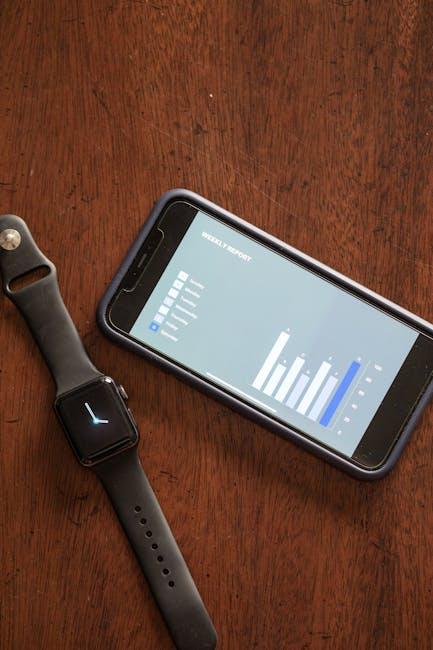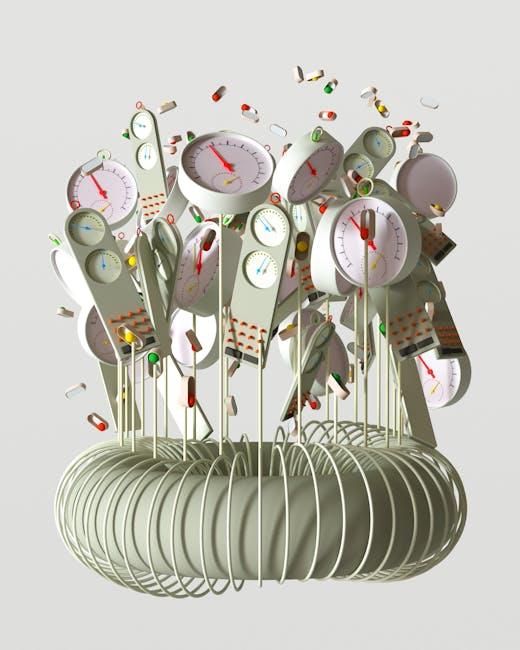In a world increasingly defined by the seamless fusion of technology and daily life, wearable devices have emerged as silent companions on our wrists, ears, and even clothing. These sleek gadgets do more than tell time or play music-they constantly monitor our bodies, transforming streams of biometric data into real-time health feedback. This evolving frontier in wearable technology offers a window into our well-being, empowering individuals to make informed decisions and fostering a new era of personalized healthcare. As sensors become smarter and algorithms more sophisticated, the line between technology and biology continues to blur, inviting us to explore how wearables are reshaping our relationship with health, one heartbeat at a time.
The Evolution of Wearable Tech in Health Monitoring

From the bulky pulse oximeters and basic pedometers of the past to the sleek smartwatches and biometric rings today, the journey of wearable technology in health monitoring has been nothing short of revolutionary. Early devices focused primarily on step counting and heart rate measurement. However, advancements in sensor technology, miniaturization, and AI integration have transformed wearables into sophisticated tools capable of detecting arrhythmias, blood oxygen levels, sleep quality variations, and even stress indicators in real time. This progression marks a pivotal shift from passive tracking to active, personalized health management.
Modern wearables offer a diverse set of features tailored to individual health needs, empowered by continuous data collection and instant feedback. Among the most notable capabilities are:
- Real-time heart rate variability monitoring for early detection of cardiovascular anomalies.
- Sleep stage analysis that pinpoints disruptions and suggests improvements.
- Blood glucose and hydration tracking, aiding chronic condition management.
- Stress level detection through galvanic skin response and heart rate fluctuations.
| Feature | Purpose | Benefit |
|---|---|---|
| ECG Monitoring | Detect heart rhythm abnormalities | Early detection, prevention |
| SpO2 Sensors | Measure blood oxygen saturation | Monitor respiratory health |
| Sleep Tracking | Analyze sleep patterns | Improve rest quality |
Decoding Real-Time Data for Personalized Wellness

Harnessing the power of real-time data from wearable devices transforms generic health advice into a personalized wellness journey. These smart gadgets continuously collect a wealth of information-heart rate, sleep patterns, activity levels, and even stress indicators-offering immediate insights that empower users to make informed lifestyle choices. By interpreting these data streams, algorithms can craft tailored recommendations that adapt to your unique rhythms and needs, whether that means adjusting workout intensity, suggesting mindfulness breaks, or optimizing sleep hygiene.
Key advantages of real-time data-driven wellness include:
- Enhanced responsiveness to your body’s signals
- Improved prevention strategies through early detection
- A dynamic, evolving health plan instead of static guidelines
| Metric | Benefit | Example Insight |
|---|---|---|
| Heart Rate Variability | Stress Monitoring | Notice increased stress during afternoon meetings |
| Sleep Stages | Sleep Optimization | Identify restless nights to improve bedtime routine |
| Activity Levels | Fitness Adjustment | Adjust daily steps to meet recovery goals |
Enhancing Patient Outcomes Through Continuous Feedback

Continuous feedback loops enabled by wearable technology have revolutionized how healthcare professionals monitor and adjust treatment plans. Patients no longer rely solely on periodic check-ups; instead, real-time data fosters a dynamic partnership between patients and clinicians. This immediacy permits swift intervention, whether it’s modifying medication dosages or adjusting lifestyle recommendations based on current vitals. The resultant personalized adjustments elevate overall care quality, reducing hospital readmissions and enhancing chronic disease management.
Key benefits enabled by continuous feedback from wearable devices include:
- Proactive Monitoring: Early detection of potential health issues before symptoms escalate.
- Increased Patient Engagement: Empowering individuals to participate actively in their health journey through instant insights.
- Data-Driven Decisions: Comprehensive, up-to-date metrics allow for evidence-based modifications.
| Metric | Impact on Outcomes | Frequency of Feedback |
|---|---|---|
| Heart Rate Variability | Stress & Recovery Monitoring | Continuous |
| Blood Glucose Levels | Diabetes Management | Real-time |
| Sleep Quality | Recovery Optimization | Nightly |
Best Practices for Integrating Wearables into Daily Health Routines

To seamlessly include wearables in your daily health routine, start by setting clear, personalized goals that align with your wellness journey. These gadgets track everything from heart rate to sleep patterns, but their value skyrockets when paired with specific targets like improving daily step counts or enhancing sleep quality. Consistency is key: wear your device regularly, sync data often, and review your progress at set intervals. This habit fuels motivation and helps you adapt your activities based on real-time feedback. Also, consider the context in which you use your wearable-some models excel during workouts, while others are optimized for 24/7 health monitoring.
Maximize the impact of your wearable by integrating insights into daily habits beyond just data collection. Utilize apps that provide actionable recommendations rather than raw metrics, guiding you on hydration, stress management, and recovery. Pairing wearables with other health tools, such as nutrition trackers or meditation apps, creates a holistic approach that empowers well-being with informed choices. Below is a quick comparison of effective strategies to integrate wearables into daily routines:
| Strategy | Benefit | Example |
|---|---|---|
| Goal Setting | Focused Tracking | 10,000 Steps/Day |
| Regular Syncing | Up-to-date Data | Daily Sync at Night |
| Integrated Apps | Comprehensive Insights | Nutrition + Wearable |
| Contextual Use | Optimized Performance | Workout Mode Activation |
The Conclusion
As wearable technology continues to evolve, the line between our bodies and our devices grows ever thinner, weaving a seamless tapestry of real-time health insights. This digital dialogue between human and machine holds the promise of not just monitoring wellness, but redefining it-empowering us to listen more closely to the subtle rhythms within. While challenges remain, the steady pulse of innovation ensures that wearable tech will remain a vital thread in the fabric of personalized health, guiding us toward a future where knowledge isn’t just power-it’s a lifeline.














